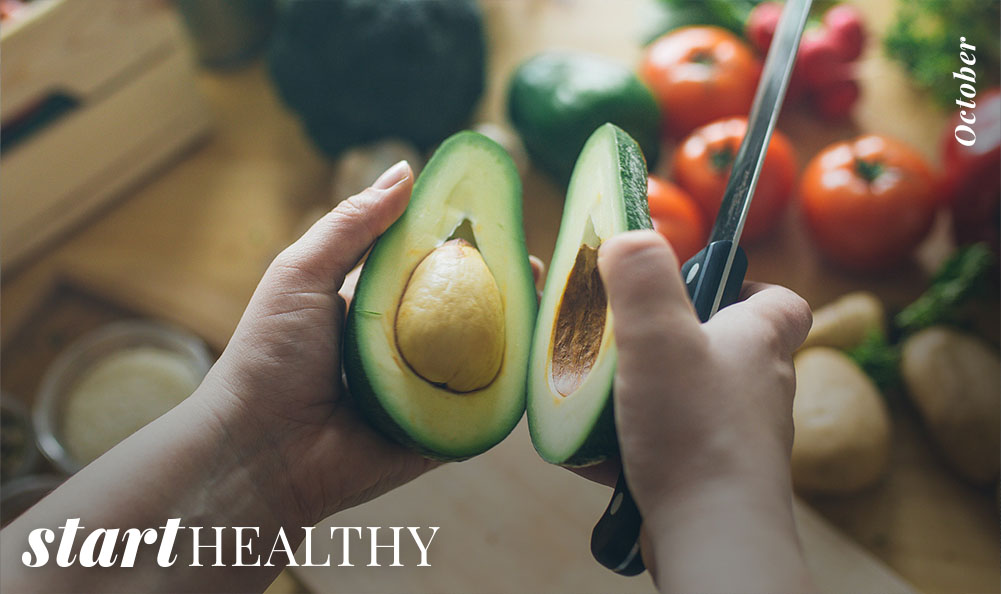 +
+


 +
+


 +
+


The month of October brings seasonal changes and takes us one step closer to the holidays. While the holiday season is a happy time for many, it can cause added stress for some people. This issue of Start Healthy is here to help you make the most of this time of year with a look at the amazing benefits of spending time with friends, a guide for strengthening your body through stretching, delicious recipes with nutritious avocados, and tips for creating a budget for the holidays.
Though the last couple of years have felt isolating, friendships are important to our physical and mental health. The enclosed article offers a look at those health benefits, including reduced anxiety and depression.
Stretching is an important part of any exercise routine. It helps strengthen your muscles and increases flexibility and range of motion. The guide in this issue takes a closer look at different types of stretches and when you should do them.
You’ve probably tried avocado toast, but what about a tostada with avocado puree? Inside you’ll find three new twists on classic avocado-based recipes.
It’s important to start saving for the holiday season sooner rather than later. Be sure to read the article on creating a realistic holiday budget with tips for how to stick to it.
Here’s to staying mentally and physically healthy this year. As always, it’s a pleasure to send you this magazine.
 +
+


Psychologist, friendship expert, and speaker Dr. Marisa G. Franco discusses the many ways friendships impact our lives.
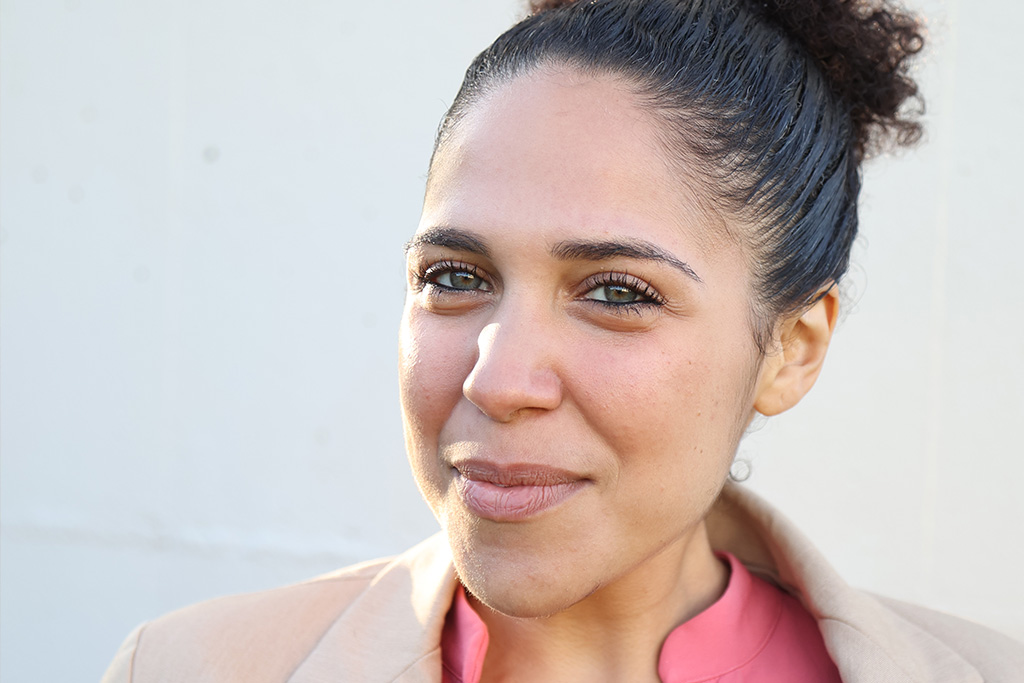
Why are friendships so important?
Friendships have a powerful effect on both physical and mental health. In fact, research shows that being lonely is the equivalent of smoking fifteen cigarettes a day. In addition, friendship is related to less depression and anxiety, among other things. Studies have found that if you’re looking at a hill and estimating how steep it is, you’ll see it as less steep if you’re beside a friend, and if you’re looking at someone who seems imposing, you’ll consider them less threatening when you’re alongside a friend. Being with friends fundamentally alters our perception of the world—we perceive it as a safer place.
This is important because loneliness isn’t just a feeling; it’s an entire mental state. People who are lonely report liking people less and believe people are rejecting them even when they’re not. They also get poorer sleep. Historically, if we were lonely, we were separated from our tribe and in danger. Now, our bodies undergo that same process and stress, even though we’re not necessarily in danger. And it’s hard to get out of loneliness because it can be very self-reinforcing.
Are we meant to be around other people?
Yes. We are social creatures by nature. Until recent centuries, people were always part of their community. But with the Industrial Revolution, they started leaving their families and communities for work. It became normal to live alone. That’s also why friendships became more important.

Would you share some friendship advice from your new book, Platonic?
Absolutely. I think the big thing we get wrong about friendship is that it happens organically. Sociologist Rebecca Adams says for friendships to happen organically, we need continuous unplanned interaction and shared vulnerability, which we don’t often have as adults—especially at work, where we’re often neither vulnerable nor our authentic selves. So you need to try to initiate friendship; you can’t just wait for friends to fall into your lap. People who see friendship as happening based on luck are lonelier over time, whereas those that see it as happening based on effort are less lonely.
To find friends, pursue something that interests you and will bring you into a community with other people, whether that’s joining an exercise group, hiking group, or art group, and stick with it. It capitalizes on the mere exposure effect, which is our unconscious tendency to like people when they’re more familiar to us. You also must overcome something called covert avoidance, which is the tendency to show up physically but check out mentally. You’re there, but you’re not putting yourself out there—you’re on your phone or talking to the one person you already know. You need to engage with others. People often don’t because they’re afraid of rejection, so it’s important to assume people like you and take initiative.

Do gender-based differences exist?
Generally speaking, yes. I’ve heard from other researchers that the loneliest person is the older man. There are certain social factors in play, like women keeping their friendships alive when they enter romantic partnerships a lot more than men do. That’s why men’s mental health tends to suffer more than women’s when a partner dies.
Research also tells us that men tend to have less intimacy in their friendships, reaching out for emotional support half the time or less compared to women. I think this problem is fundamentally about vulnerability, which cements all types of relationships. Men are far less vulnerable in their friendships than women are.
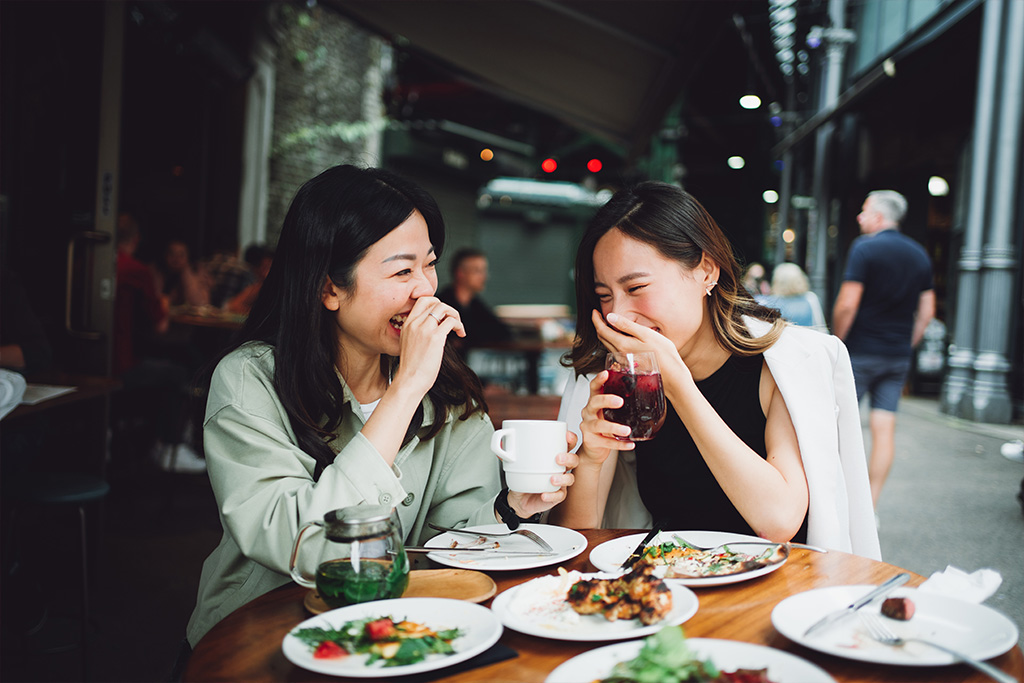
Is it better to have a few close friends or many friends?
Quality of friendships affects mental health more than quantity, but quantity can also help; it depends on your circumstance. If I move to a new city, having some friends is going to be better than having none. And it’s going to take time to develop those quality friendships, so I might focus on my “locationships.” But if I’ve lived somewhere for a while, I’ll have a larger friend network already. So I’m going to start vetting my friends because I know quality is the ultimate goal.
Friendship also tends to expand our identity and make things contagious. For example, if my friend colors her hair, I’m more likely to color mine. Younger people, who are figuring out who they are, usually want more friends and to be exposed to different things. In doing so, they’ll likely have friends who are different from them; from a social change perspective, that can also benefit society.
In contrast, socioemotional selectivity theory says that as we get older, we have fewer friends—but we’re happier about it. We tend to focus on quality, not quantity. That’s not to say that everybody’s happy to have only a few friends, but social support tends to be one of the best predictors of people being happy in their retirement.

In the twenty-first century, especially considering social media, do people prioritize and nourish friendships enough?
No. But change is happening. For example, I grew up with the script that finding a romantic partner makes your life complete. Nobody ever asked me about my friends; they always asked if I had a boyfriend. People are acknowledging that you might need a whole community to feel whole. It’s harmful to think a partner can complete you so much that you don’t need anyone else. That puts a lot of pressure on one person.
Social media isn’t linked to loneliness—it depends on its use. People who use it to replace in-person interaction are lonelier, whereas people who use it to facilitate interpersonal interaction, to DM a friend and say, “Let’s hang out,” are less lonely. A decade ago, before smartphones got popular, the young adult population had the best mental health of any generation. Now research shows that Gen Z has the worst of any generation. The problem is people normally develop empathy and emotional intelligence through eye contact. And so, when I’m only texting you, I’m not humanizing you. And that makes it very hard for me to develop friendship skills. Even simply having a phone on the table makes people feel less connected. This was gradually happening before social media, though; the medium just made it worse.
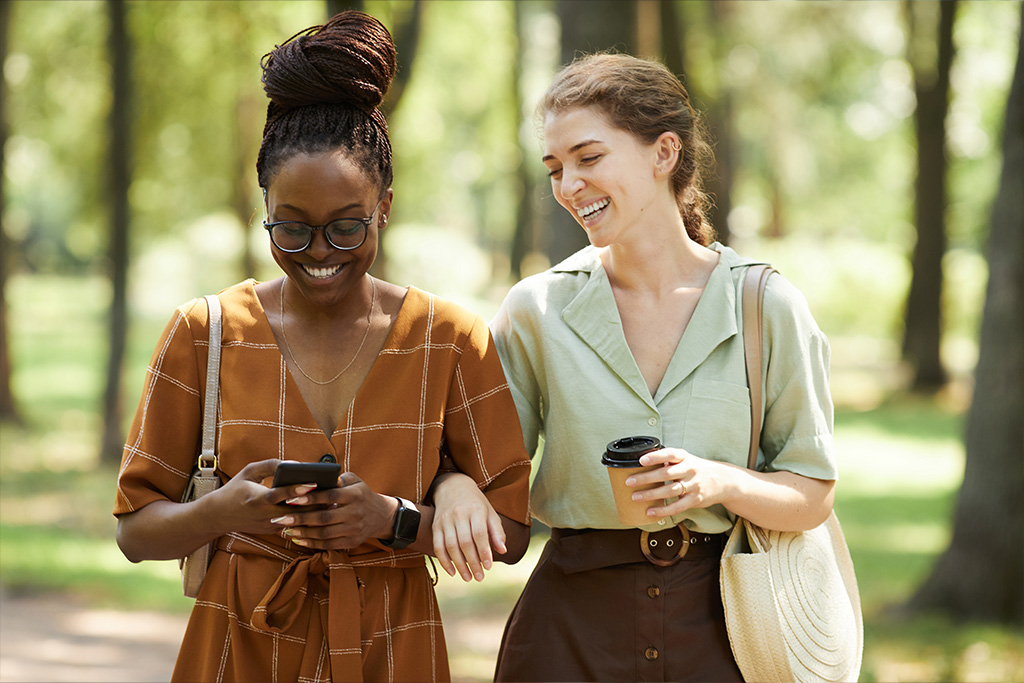
What’s the top quality of a good friendship?
In the end, a lot of us have insecurities about friendship. That gives us what’s called an egocentric bias, which means we focus on how people are treating us versus how we’re treating them. We’ll ask questions like “Why don’t friends reach out to me?” or “Why don’t I feel like I belong?” instead of flipping those questions on ourselves. The number one factor that makes people want to be friends with someone is they make you feel valued. So if you want to create friendships, you must focus less on yourself and more on making other people feel valued.
For more info, visit drmarisagfranco.com or read Dr. Franco’s book, Platonic.
 +
+


Most of us enjoy exercising, whether it’s a daily stroll or pumping iron. But if you’ve ever felt the sharp pain of a pulled muscle, then you also know how important stretching is to help maintain strength, flexibility, and range of motion.
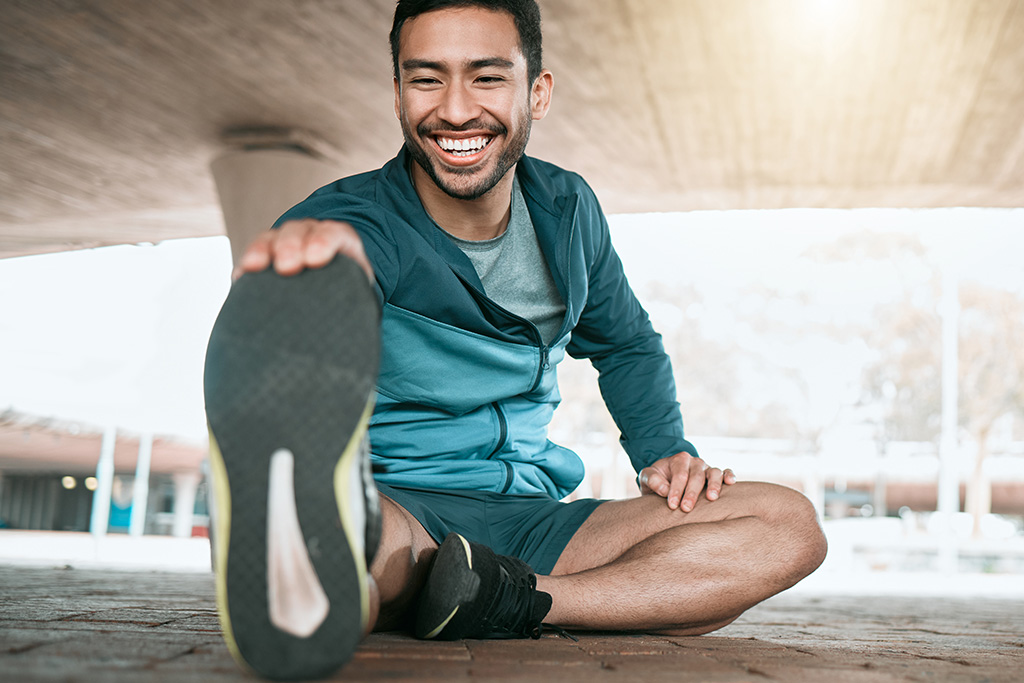
Stretching before exercise assists in transitioning your body from a restful state to an active state. It warms up your muscles, increases blood flow to prepare you for vigorous exercise, and improves your overall workout performance. Postexercise stretching brings the body back to its original relaxed state and decreases the levels of lactic acid in your muscles produced during exercise that make your muscles sore and fatigued.
Caitlin Mackrell, clinic manager at CORA Physical Therapy, strongly advises her clients to stretch before and after any exercise routine. Mackrell says, “The majority of muscle strains and injuries can be avoided if proper warm-up and cooldown stretches are part of your exercise routine. And depending on an individual’s comorbidities and medical history, stretching will help to decrease blood pressure and regulate heart rate.”
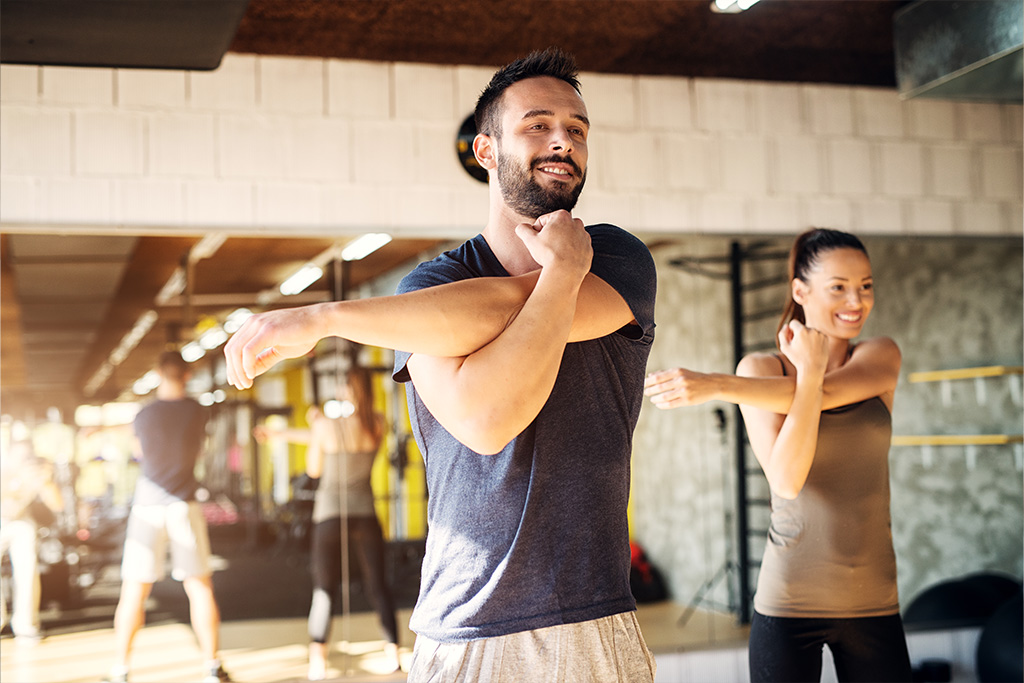
Mackrell notes that getting started may be a bit uncomfortable, so it’s important to take it slow in the beginning. Be consistent, and stretch for five to ten minutes with the muscles you will be using during your workout. For example, if you’re going for a run or fast-paced walk, perform lower-body stretches, such as lunges and knee circles, and do shoulder and forearm stretches to loosen and relax your upper body. Also, be sure to complete your postworkout routine in the same fashion as your pre-exercise warm-up by focusing on the muscle groups you just worked on. The goal is to hold each stretch for twenty to thirty seconds, repeating each one two or three times.
The most common types of stretches are static, dynamic, and ballistic. Your fitness level and the type of exercises you do will dictate the kind of stretching exercises to perform.
Static stretching
The static stretch requires you to elongate your muscles as far as they can go without causing pain. This means executing a slow, controlled stretch while isolating each muscle and then holding each stretch for fifteen to thirty seconds, repeating each one two to three times. Examples include hamstring, shoulder, and back stretches and side bends.
Dynamic stretching
Great for an overall body warm-up, dynamic stretching mimics the type of exercises you will be doing during your workout. For example, if you’re getting ready to swim, performing arm circles will loosen up your shoulders and warm up your joints and muscles. Dynamic stretching puts your body through a full range of motion, such as trunk twists, hip circles, or walking lunges; movements should be controlled by holding each stretch for about twenty seconds and repeating it two or three times.
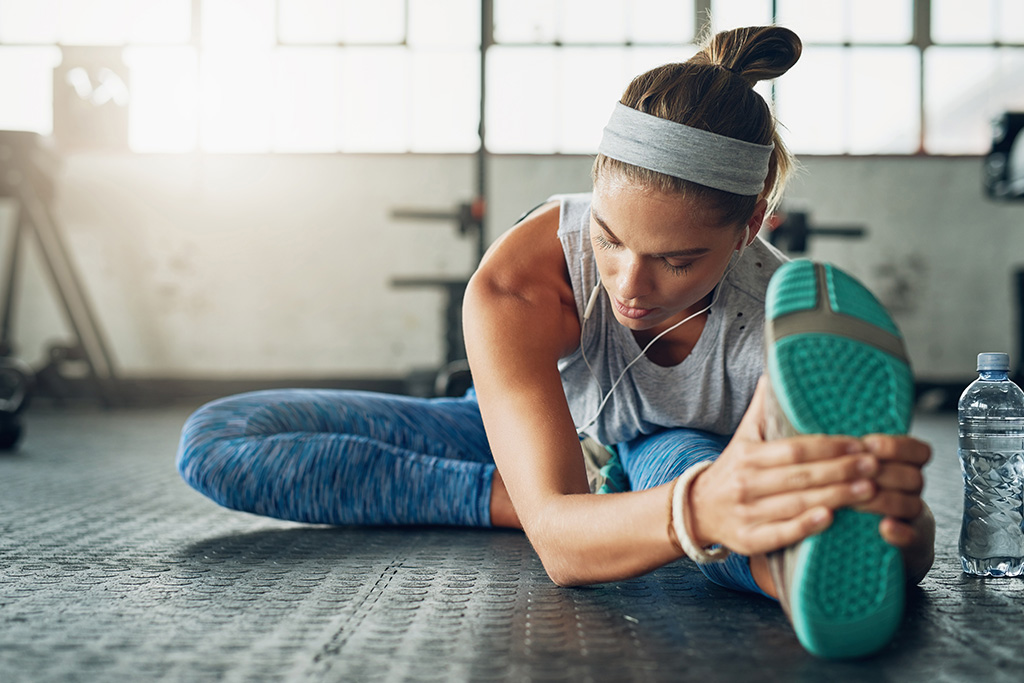
Ballistic stretching
Using your body’s momentum, ballistic stretching forces your limbs and other body parts to go beyond their normal range of motion, pushing your muscles farther and faster. For example, when touching your toes, rather than doing a slow, elongated stretch as you would with static stretching, this stretch promotes a bouncing up-and-down motion. Because this type of warm-up is only intended for athletes such as dancers, football players, or basketball players, it’s not recommended as a standard warm-up or cooldown stretching routine.
To get the full benefit of a stretch, it’s important to breathe deeply and regularly. When you’re holding a stretch, inhale deeply through your nose, allow your abdomen to expand, and, as you exhale, let the air escape through your mouth and then continue to breathe normally. Such breathing enables your heart to pump oxygenated blood to the muscles and remove lactic acid.

Because stretching is not an age-restricted activity, older adults should be sure to stretch not just before and after exercise but also on their in-between days of exercise. Doing so helps with flexibility, range of motion, and balance, reducing the chance of falling. For safety, Mackrell suggests older individuals should focus on static stretches and always support themselves by sitting on a chair or using a wall for support.
Before starting any type of stretching routine, check with a health professional to make sure your current physical condition and ability match the type of stretches you want to do. Keep your stretching routine simple, and incorporate it every time you exercise to get the most out of your physical activity.
 +
+


Even though it’s been around for ages, the avocado has perhaps never been more popular across the globe than it is today. This dense, nutrient-rich fruit is even the star of a new cookbook, Avocadomania, from which these delicious recipes are taken—each the brainchild of a Mexican cuisine expert.
This zesty take on open-faced tortillas prepares in minutes and features layers of flavor.
Try your hand at this tasty homemade guac recipe, which only requires five ingredients.
Avocados are mixed with watercress, onions, and blueberry-infused dressing for an explosion of flavor.
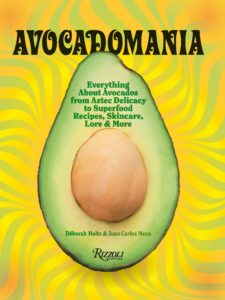
 +
+


recipe by Lula Martín del Campo
photos by Lula Martín del Campo
My history with the avocado has spanned a lifetime. I really enjoy the simple taste of a tostada with avocado puree [i.e., the original avocado toast!] and a touch of artisan salt. In my profession, although it might not seem true, sometimes it’s hard for us to have regular meals. So, when I’m busy working and I need to eat, I have my tostada with avocado. It never fails me!
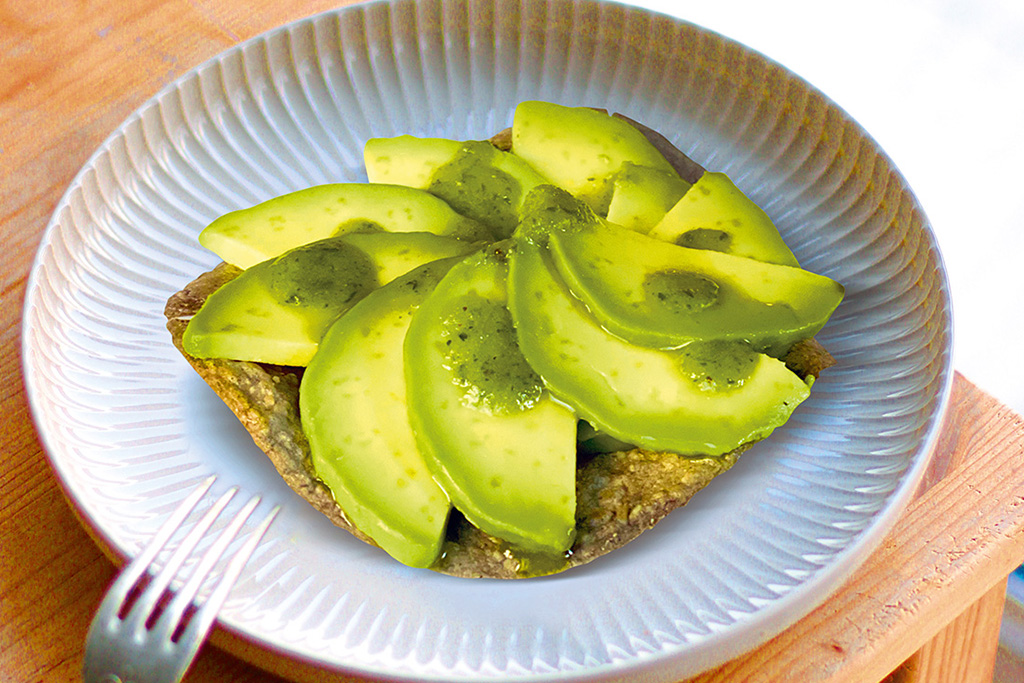
4 Servings
For the Aguachile
For the Tostada
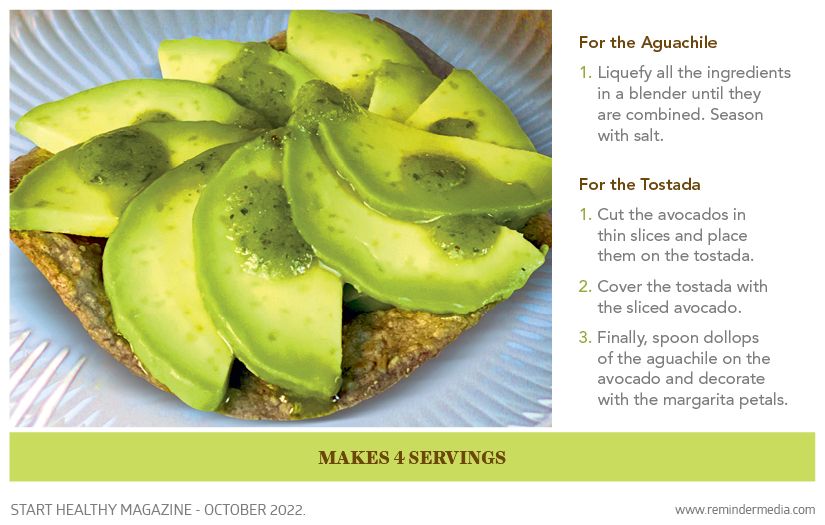



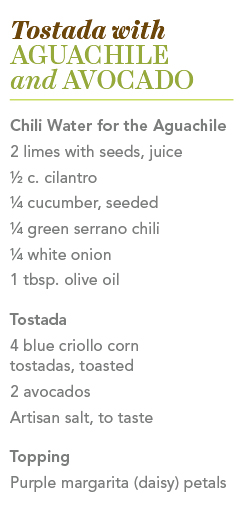
 +
+


recipe by Raquel Torres
photos by Dayvison de Oliveira Silva/Pexels
Throughout the length and breadth of Mexico, there are varieties of this “green butter” on our tables. In the coffee-growing region of central Veracruz, we have a seasonal variety called Antigua, which is like that of Chiapas. The most important variety to us is the Mexican Criollo avocado or aguacatillo, as we call it here. Using the fresh or dried leaves of the aguacatillo tree, we make rabbit adobo, slow-cooked duck or beef barbacoa, and we cook a delicious chicken in adobo. In covered markets, outdoor markets, and street food stands, we can find tamales, masa gorditas stuffed with beans, or deep-fried, bean-filled infladas, whose main ingredient is dried aguacatillo leaf powder.
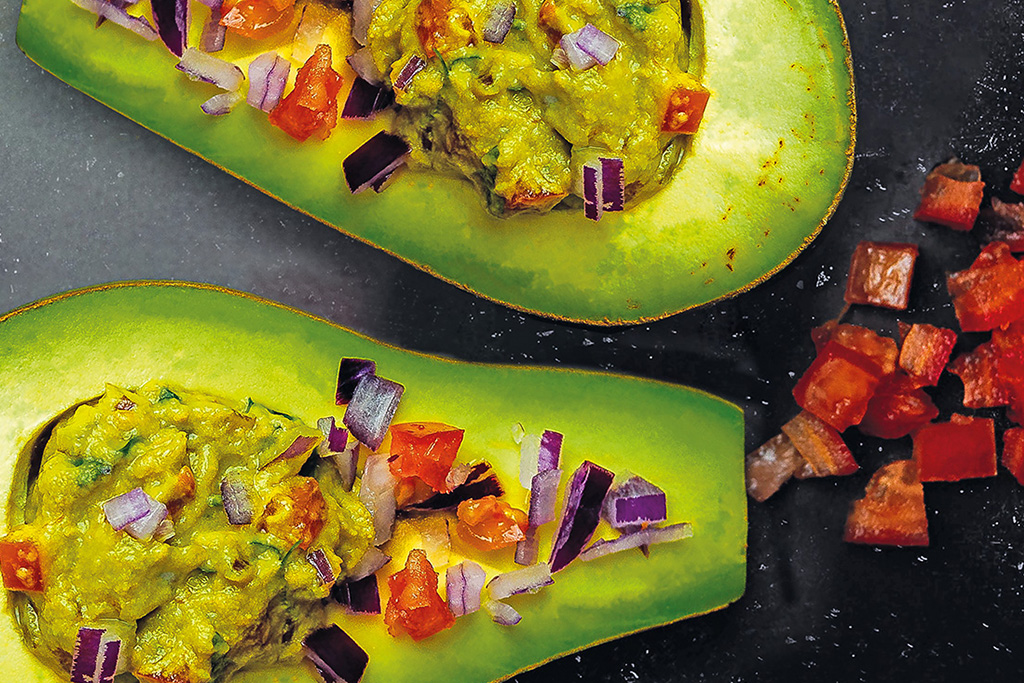
2 Servings
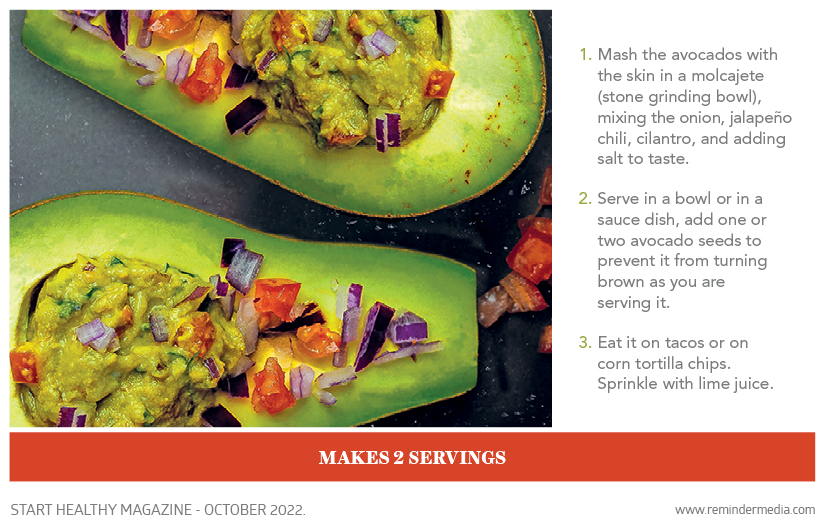




 +
+


recipe by Lesterloon Sánchez
photos by Lesterloon Sánchez
When you visit Sunday markets in Xalapa and its vicinity, you can see the baskets overflowing with fragrant Criollo avocados, whose leaves perfume countless dishes. I always take advantage of them when they’re in season to prepare a tasty salad with fresh watercress like how my grandmother used to make.
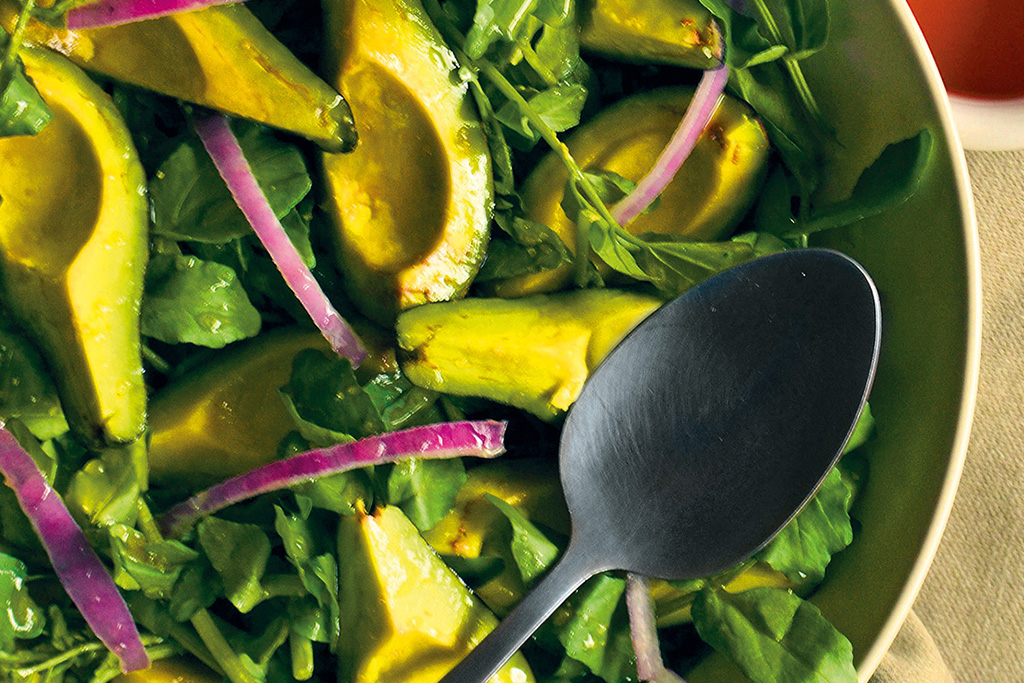
4 Servings
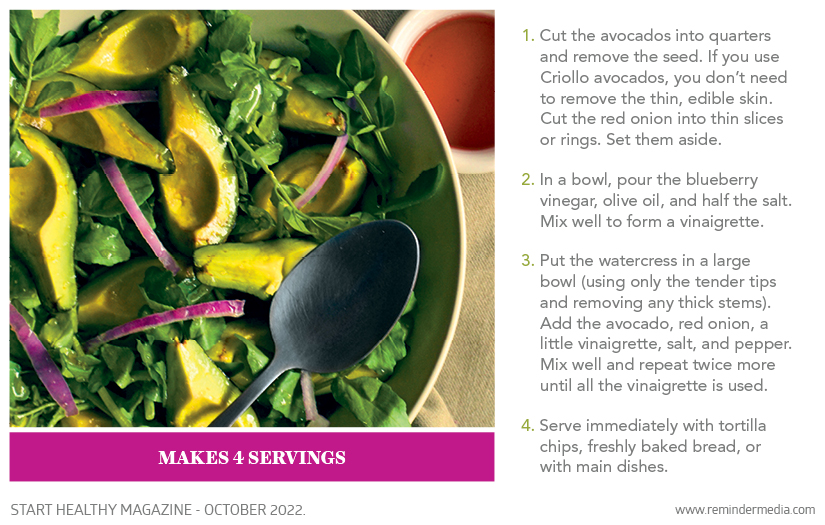



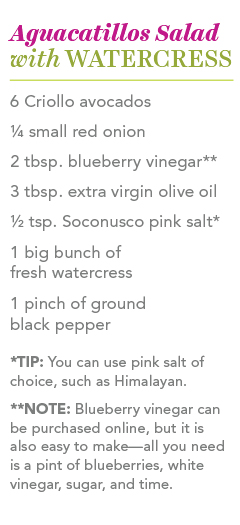
 +
+


The holidays are a festive time to share with family and friends, but if you aren’t careful, you can overspend on gifts, food, travel, and other expenditures and wind up in debt after the season is over. These suggestions can help you celebrate without going over budget.

To avoid accumulating debt over the holidays, begin saving now to help ensure that you’ll have enough money to use on holiday-related purchases. If possible, don’t use your credit cards for your holiday spending since you may pay more in the long run and go over budget if you accrue interest and fees. If you can cut out avoidable expenses, such as your daily latte, you might be able to reserve even more cash for your holiday budget. You can use an app like Mint to track your savings, cash, spending, and credit card balances.
Calculate how much income, not only from your paycheck or business but also from any side job, you’ll bring in during the weeks leading up to the holidays so you can create a reasonable budget. You should also add up nonholiday expenses, such as your mortgage and credit card payments, that you will have before the holidays. For example, if you have an expensive dentist visit coming up, it may limit how much you can allocate to your budget. Also, determine which of your expenses are essential and which can be pushed back until after the new year if funds are tight. Once you determine your total preholiday costs, deduct the number from how much income you will bring in to determine your maximum holiday budget.

To get an idea of how much you might spend this holiday season, look at what your holiday expenses were last year. As a guide, keep in mind that, on average, Americans planned to spend $998 on holiday-related purchases in 2021, according to the National Retail Federation. Even if you didn’t keep your receipts, you can do some research online to estimate what you spent the previous year if you remember what you bought. If your gift list and circumstances are like last year’s, plan to spend at least as much as last year since prices have increased for most goods.
Put together your gift list, the parties you’ll attend and host, and related purchases you’ll make, such as clothing, decorations, food, and travel. Take your maximum budget, estimate as best as you can how much you would like to spend on everyone and everything on your list, and add them up to create your total holiday budget. Remember that you don’t have to buy an expensive gift for everyone on your list. A thoughtful, inexpensive item like a book by your recipient’s favorite author can be a good substitute for a pricey gift.
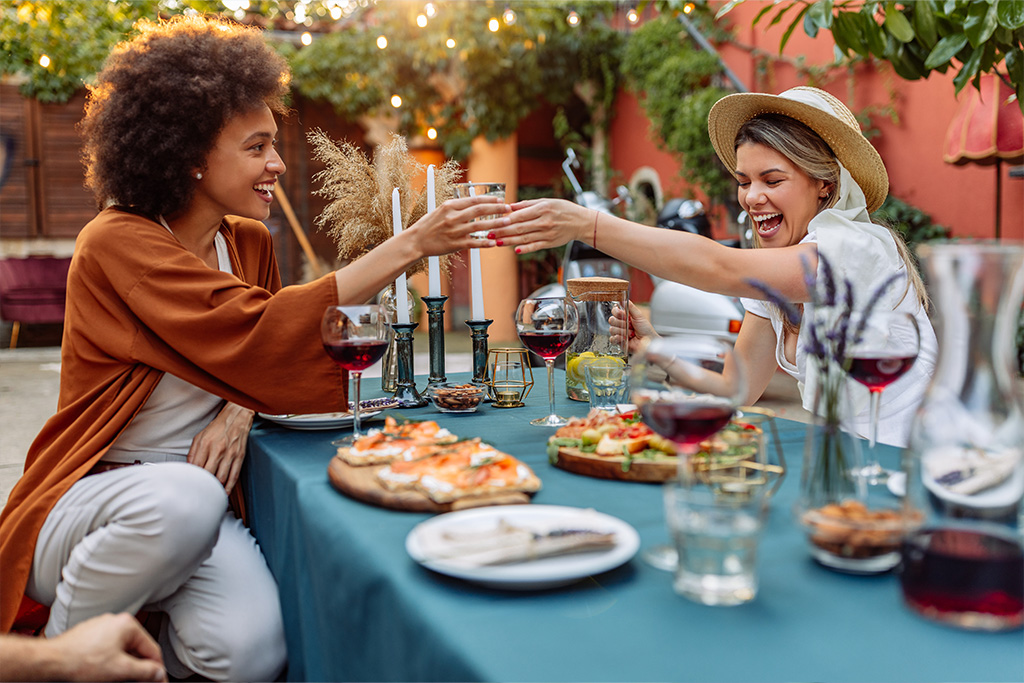
It’s a good idea to have additional money in your budget for such unexpected holiday costs. Don’t forget that you may need cash for items like postage, gift wrap, or last-minute activities, such as an impromptu get-together with friends. If you can, try to put an additional $100 into your budget for surprise expenses.
If added costs push your projected holiday expenses over what you can afford, you may need to make changes to your budget. Take a closer look to see if you can remove some items on your list or if you can spend less on a category, such as gifts, so you can put more toward other holiday costs, such as travel, to create a holiday budget that works for you.
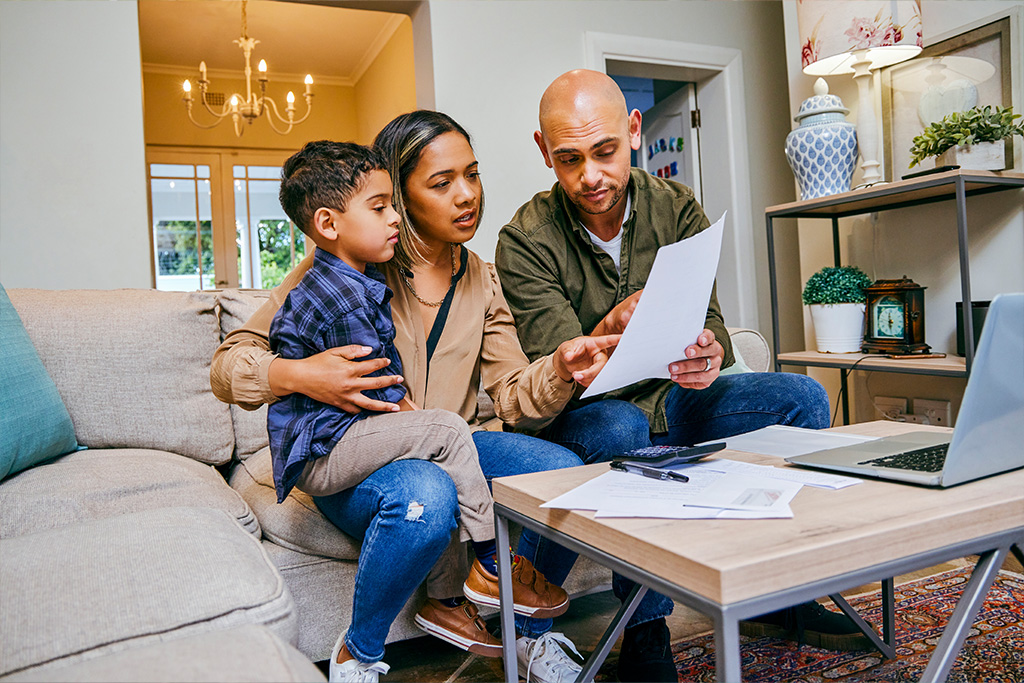
Once you have your finalized budget, figure out how much you should set aside each week or month to fund it. So, for instance, if you plan to spend $1,000 this holiday season and have eight weeks to save up before you begin shopping, traveling, and participating in other holiday activities, you could aim to set save $125 a week to pay for it.
With careful planning and budgeting, you can stay in control of your holiday spending and enjoy the season more. Consider it a much-deserved gift to yourself!

 +
+


